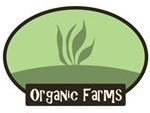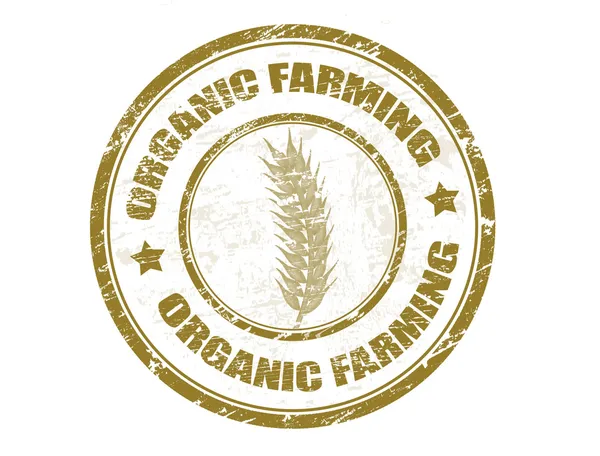http://www.epa.gov/agriculture/torg.html
"Organically grown"
food is food grown and processed using no synthetic fertilizers or pesticides.
Pesticides derived from natural sources (such as biological pesticides) may be
used in producing organically grown food.
Organic Farming
http://en.wikipedia.org/wiki/Organic_farming
Organic farming is a form of
agriculture that relies on techniques such as crop rotation, green manure,
compost and biological pest control. Organic farming uses fertilizers and
pesticides but excludes or strictly limits the use of manufactured (synthetic)
fertilizers, pesticides (which include herbicides, insecticides and
fungicides), plant growth regulators such as hormones, livestock antibiotics,
food additives, genetically modified organisms, human sewage sludge, and
nanomaterials.
Organic agricultural methods are
internationally regulated and legally enforced by many nations, based in large
part on the standards set by the International Federation of Organic
Agriculture Movements (IFOAM), an international umbrella organization for
organic farming organizations established in 1972. IFOAM defines the
overarching goal of organic farming as:
"Organic agriculture is a
production system that sustains the health of soils, ecosystems and people. It
relies on ecological processes, biodiversity and cycles adapted to local
conditions, rather than the use of inputs with adverse effects. Organic
agriculture combines tradition, innovation and science to benefit the shared
environment and promote fair relationships and a good quality of life for all
involved..."
—International Federation of Organic
Agriculture Movements
Organic Products
http://www.ams.usda.gov/AMSv1.0/getfile?dDocName=STELDEV3004446&acct=nopgeninfo
Organic products have strict production and labeling requirements.
Unless noted below, organic products must meet the following requirements:
- Produced without excluded methods; genetic engineering,
ionizing radiation, or sewage sludge.
- Produced per the National List of Allowed and Prohibited
Substances (National List).
- Overseen by a USDA National Organic Program authorized
certifying agent,
- Following all USDA organic regulations.
An overview of labeling the various categories of organic
products is provided below.
PRINCIPAL DISPLAY PANEL: portion of the package most likely
to be seen by customers at the time of purchase.
INFORMATION PANEL: includes ingredient statement (list of
ingredients contained in a product, from highest to lowest percentage of final
product) and other product information.
100% Organic
Raw or processed agricultural products in the “100 percent
organic” category must meet these criteria:
- All ingredients must be certified organic.
- Any processing aids must be organic.
- Product labels must state the name of the certifying agent
on the information panel.
An overview of labeling the various categories of 100% organic
products is provided below.
PRINCIPAL DISPLAY PANEL: May include USDA organic seal
and/or 100 percent organic claim.
INFORMATION PANEL: Must identify organic ingredients (e.g.,
organic dill) or via asterisk or other mark.
Normal Organic
Raw or processed agricultural products in the “organic” category
must meet these criteria:
- All agricultural ingredients must be certified organic, except
where specified on National List.
- Non-organic ingredients allowed per National List may be
used, up to a combined total of five percent of non-organic content (excluding
salt and water).
- Product labels must state the name of the certifying agent
on the information panel.
An overview of labeling the various categories of normal organic
products is provided below.
PRINCIPAL DISPLAY PANEL: May include USDA organic seal
and/or organic claim.
INFORMATION PANEL: Must identify organic ingredients (e.g.,
organic dill) or via asterisk or other mark.
http://en.wikipedia.org/wiki/Organic_certification
Organic
certification is a certification process for producers of organic
food and other organic agricultural products. In general, any business
directly involved in food production can be certified, including seed suppliers, farmers,
[food] processors, retailers and restaurants.
Requirements vary from country to country, and
generally involve a set of production standards for growing, storage,
processing, packaging and shipping that include:
- no
human sewage sludge fertilizer used in cultivation of plants or
feed of animals
- avoidance
of synthetic chemical inputs not on the National List of Allowed
and Prohibited Substances (e.g. fertilizer, pesticides, antibiotics,
food additives, etc.), genetically modified organisms, irradiation,
and the use of sewage sludge;
- use of
farmland that has been free from prohibited synthetic chemicals for a
number of years (often, three or more);
- keeping
detailed written production and sales records (audit trail);
- maintaining
strict physical separation of organic products from non-certified
products;
- undergoing
periodic on-site inspections.




1 comment:
Excellent and helpful post… i am so glad to left comment on this.
Organic input for agriculture
Post a Comment